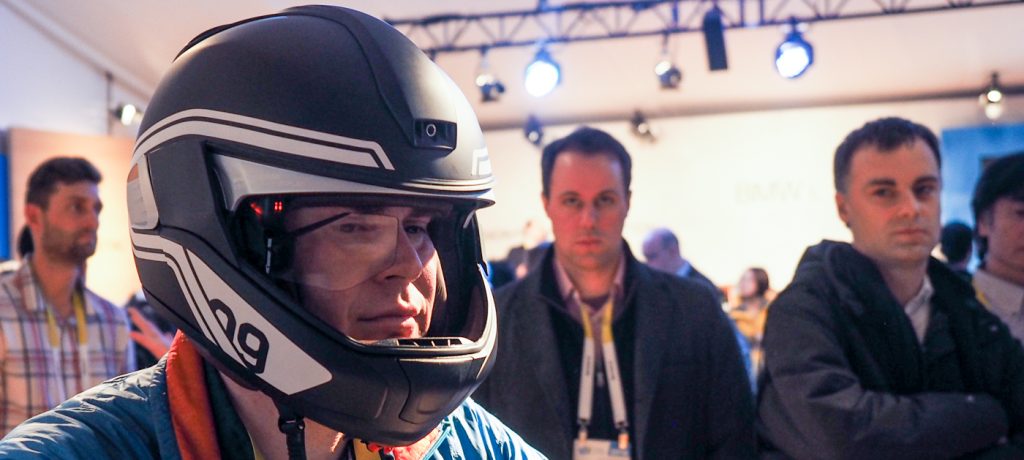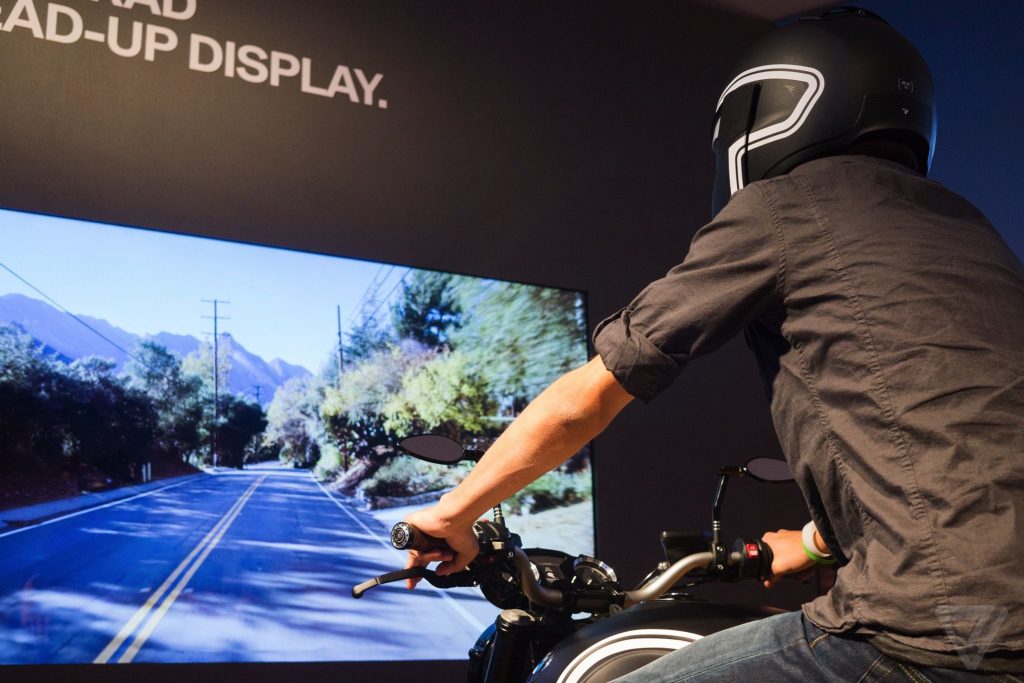BMW is working on an idea that could solve the problem of seeing and hearing traditional satellite navigation systems when riding by integrating GPS into a helmet that delivers information directly into your head.
No, there are no probes stuck into your brain. The idea is just to use the sort of haptic feedback that most smartphones have to give you information rather than relying on visual or audible methods. While our eyes and ears are already working overtime when we’re riding, our other senses – touch, smell and taste – aren’t used as much. Of them, touch is clearly the easiest to access and use, and that’s what haptic communication is based on.
Just as your phone might well alert you to a call or message by vibrating in your pocket, the idea of BMW’s haptic helmet is to use your ability to feel pressure or vibration, passing on information without distracting your vision or risking an audible signal that you might not hear.
The firm’s patented design is for a helmet that incorporates a ring of haptic actuators around your head, each able to vibrate or apply pressure to a particular spot. The huge advantage here is that it can pass on fairly complex information simply by altering the place where you feel the vibration or the frequency or amplitude of the vibration itself.
Initially, the most obvious use is for getting directions from satellite navigation systems, but as technology is constantly increasing the amount of feedback and electronic messages we receive from the machines we use – including our bikes – GPS is just the first of many things that could take advantage of the idea.
How would haptic feedback work?
You’d clearly have to learn what the vibrations against your head mean, but BMW’s patent suggests that when it comes to navigation, the position of the vibration would reveal the direction of the next turn you need to take, while its frequency would increase as the turning gets closer.
The patent covered two variations on the idea. In the first, the navigation system is actually mounted on the bike, but a short-range radio relays information from that to a receiver in the helmet, instructing it to pass on the haptic messages. A second version is completely self-contained, with the GPS incorporated into the helmet itself.
Surely this is just pie-in-the-sky, isn’t it?
Actually, it’s not. BMW is serious about finding ways to safely reduce information overload and get vital messages to riders without distracting them. In early January this year it revealed a prototype head-up display helmet developed by DigiLens, a Silicon Valley specialist in the field. The DigiLens HUD tech is due in production next year, and by combining it with the haptic feedback revealed in BMW’s new patent there’s scope for a huge amount of information to be safely passed to riders without the need to ever take their eyes off the road or strain to listen to muffled audible instructions.
Is this just for GPS?
BMW has a key position in the vehicle-to-vehicle communications project (V2V) that many car and motorcycle firms are collaborating on at the moment. The idea is to develop a common language and protocol allowing vehicles to talk to one another, and even accept signals from roadside objects. It’s a worthy goal, since it will allow cars and bikes fitted with the system to know of each other’s presence, direction and speed whenever they’re nearby and to pass on warnings about what they’re doing. But one stumbling block is getting all that information to riders. V2V means that in future your bike will know whether or not there’s a slow-moving truck just around that blind bend or if there’s been an accident in the fog up ahead. But it still needs to pass that message to you. In cars, where audio and visual warnings are easy to implement, it’s fairly simple. But bikes pose a challenge: warning lights are often out of your direct field of vision if you’re concentrating on the road ahead, and the combination of a helmet and wind noise means audible warnings might not be heard. HUDs are one solution but BMW’s haptic helmet idea might be just as effective.

